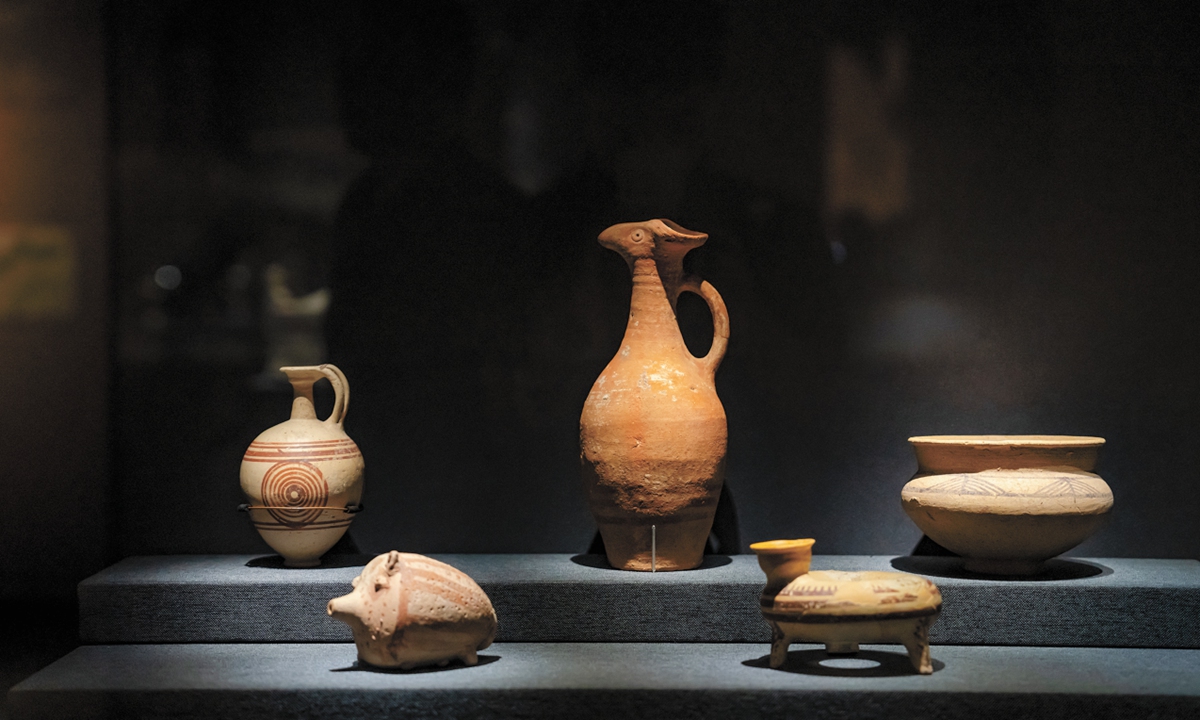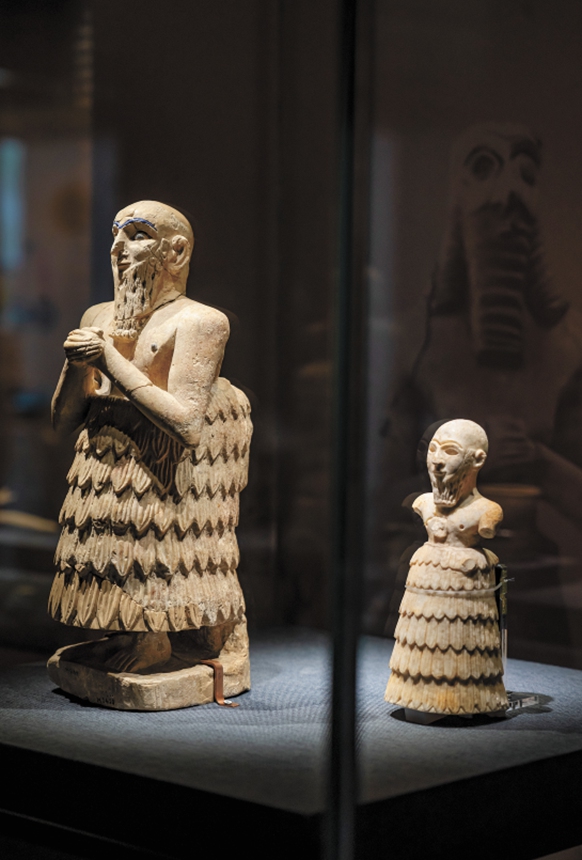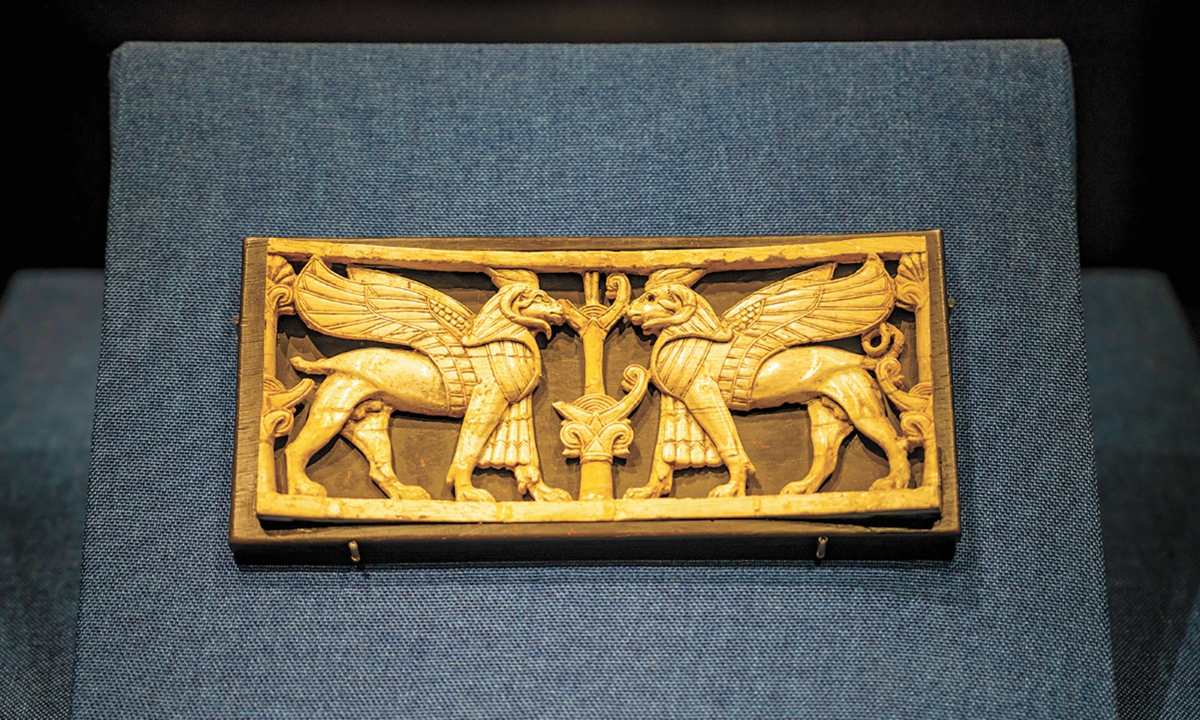
Syrian artifacts on exhibition from May to October 2024 in Nanjing, East China's Jiangsu Province Photo: VCG
A touring exhibition of 195 Syrian artifacts held in China has captured widespread attention on China's social media platforms amid the dramatic and astonishing changes taking place in Syria.
The collection, which began its journey in China in 2021, commemorating the 65th anniversary of diplomatic relations between the two countries, has traveled to cities such as Shenzhen, Chengdu, Beijing, and Nanjing, showcasing Syria's rich cultural heritage.
Following its recent display at the Nanjing City Wall Museum, the artifacts were expected to continue their tour at other major institutions in China, potentially including the Emperor Qinshihuang's Mausoleum Site Museum in Northwest China's Shaanxi Province, according to a report by Chengdu media outlet Hongxing Xinwen.
"These cultural relics will continue touring in China next year," Tan Ping, director of the Art Exhibitions China under China's National Culture Heritage Administration, which is one of the organizers of this touring exhibition, told Hongxing Xinwen.
An official from the Syrian Embassy in China told the Global Times that they are also waiting for updates from their home country regarding the future of these cultural relics.
"There is no doubt that these cultural relics currently on display in China will be well preserved and protected," Sun Jiashan, an associate researcher at the Central Academy of Culture and Tourism Administration, told the Global Times on Tuesday. In 2023, he hosted talks with the visiting Syrian cultural officials who took part in training classes for cultural heritage protection.
Executive Director of the International Alliance for the Protection of Heritage in conflict areas (ALIPH), Valery Freland, told the Global Times on Tuesday that they are in close contact with many professionals in the region and are evaluating the situation as it pertains to the protection of cultural heritage in Syria.
China plays a key role within ALIPH as a founding member of the Foundation and is represented on both ALIPH's Foundation Board and Scientific Committee, said Freland, as ALIPH is the main global fund exclusively dedicated to the protection and rehabilitation of cultural heritage in areas in conflict, post-conflict or in crisis.
Founded in 2017, ALIPH's mission is in response to the massive destruction of cultural heritage over the previous two decades.

Syrian artifact on exhibition from May to October 2024 in Nanjing, East China's Jiangsu Province Photo: VCG
Shared effort Over the past three years, a total of 195 pieces or sets of Syrian treasures highlighting Syrian culture and civilization, including statues, reliefs and lapis lazuli necklaces, have been exhibited in museums across more than 10 Chinese cities like Shenzhen and Chengdu, attracting more than 1 million visitors, according to the Xinhua News Agency.
The schedule for next year includes multiple museums including the Emperor Qinshihuang's Mausoleum Site Museum, Huzhou Museum, National Museum of Ganzhou, Dalian Museum, and Xiamen Museum.
"We are currently applying for an extension of the overseas shipment approval from the National Cultural Heritage Administration and will proceed with the specific arrangements under the guidance of relevant authorities," Tan said, according to Hongxing Xinwen.
"ALIPH has supported projects in Raqqa since 2019, and in northwestern Syria since the 2023 earthquake. We stand ready to support the protection of Syrian heritage, where and whenever this is necessary and feasible," Freland said.
In June 2024, the National Museum of China hosted the exhibition "Salvaged from the shadows, Protecting cultural heritage," co-organized with ALIPH, for artifacts selected from 450 projects that the alliance supported in 35 countries. This event showcased the realities of cultural heritage preservation in conflict zones, highlighting the current situation of the destruction of world cultural heritage over the past 30 years.
It showcases the specialized techniques and expertise in the protection and restoration of different types of cultural heritage, including movable cultural artifacts, intangible cultural heritage, and architectural heritage, as well as the importance of local community involvement, according to the Xinhua News Agency.

Syrian artifact on exhibition from May to October 2024 in Nanjing, East China's Jiangsu Province Photo: VCG
Protector of global heritageAs a founding member of ALIPH, China has extensively contributed to the organization's efforts to safeguard cultural relics in conflict zones.
Deeply taking part in heritage protection, the National Museum of China became one of the three global "International Safe Havens," according to the China Culture Daily.
"It's important to have international safe havens such as the National Museum of China in Beijing in order to safeguard heritage in extreme cases - when keeping it in its country of origin places it at immediate risk," Freland told the Global Times.
China's role in international heritage preservation also includes decades of on-the-ground restoration efforts. For example, China has helped restore ruined temples there since 1997, restoring the Chau Say Tevoda temple and the Ta Keo temple.
Since late 2018, the first Egyptian-Chinese archaeological mission has been working seasonally at the Karnak Temple Complex, inspiring many Egyptian and Chinese experts to strengthen cooperation.
According to statistics of the National Cultural Heritage Administration, Chinese archaeologists participated in 38 archaeological projects overseas in 2019, cooperating with around 20 countries.
This global involvement reflects China's broader vision for heritage preservation. From offering sanctuary to relics to exporting restoration expertise, China has demonstrated its capability as an important global member in protecting endangered cultural treasures.






